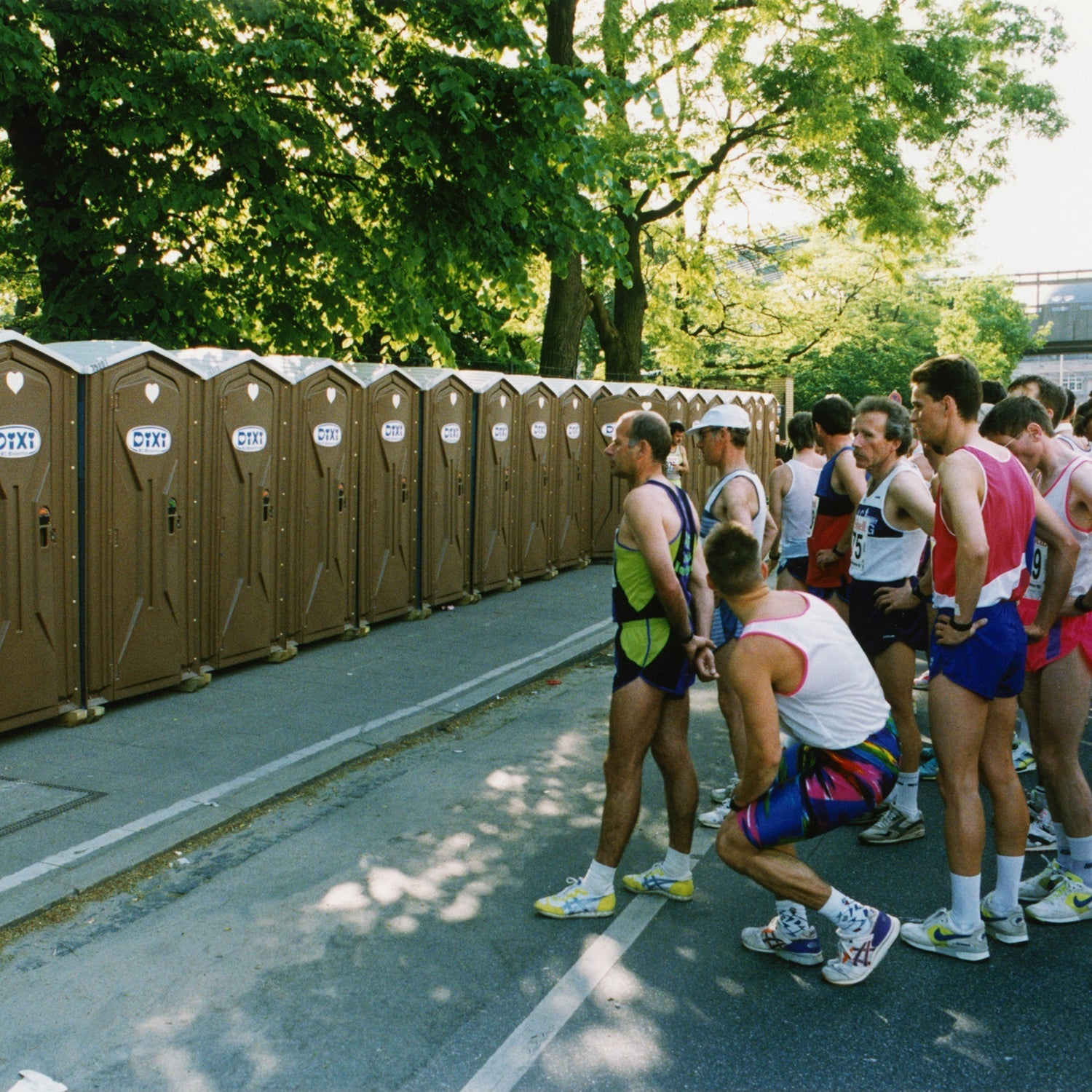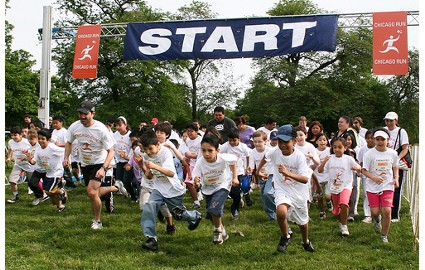How Do Marathon Runners Go to the Restroom
Marathon runners typically use portable toilets located along the race route to relieve themselves during a race. Marathon running requires endurance, determination, and meticulous planning.
One of the most common questions asked by both novice and experienced marathon runners is how to handle bathroom breaks during a race that can last several hours. While it may seem like a taboo topic, the truth is that bathroom breaks are a reality that runners must face.
This article will explore some of the strategies and options that marathon runners employ to answer the call of nature while maintaining their pace and momentum. From using portable toilets along the race route to making strategic pit stops, marathon runners have devised various methods to address this pressing issue. So, let’s dive into this essential aspect of marathon running hygiene and discuss the art of going to the bathroom during a race.
Credit: www.quora.com
Challenges Faced
When it comes to participating in a marathon, the challenges faced by runners extend beyond the physical demands of the race. One particularly unique hurdle that long-distance runners must navigate is the issue of bathroom breaks. Finding opportunities for relief during a marathon can be a complex, and even stressful, undertaking. Let’s explore the challenges that marathon runners face when it comes to managing their bathroom needs during the race.
Limited Rest Opportunities During The Race
Marathon runners encounter a significant challenge when it comes to finding suitable rest opportunities during the race. With the goal of achieving a personal best time, stopping for a bathroom break can feel like a significant setback. Additionally, the presence of long lines at portable toilets can further delay a runner’s progress. The limited number of rest stops provided along the race route can heighten the pressure to strategically plan for bathroom breaks without sacrificing precious time.
Avoiding Discomfort And Hygiene Issues
For marathon runners, avoiding discomfort and maintaining proper hygiene during the race is a key concern. The prolonged physical exertion can lead to increased sweating and chafing, making it imperative to stay as clean and dry as possible. Carrying personal hygiene items such as wet wipes or hand sanitizer becomes essential to mitigate any potential health risks associated with unsanitary conditions. Furthermore, the seamless integration of bathroom breaks into a runner’s overall race plan is crucial to ensuring that they remain physically and mentally focused on the competition.
Strategies Used
As marathon runners gear up for the big race, one question that often comes to mind, but is not frequently discussed, is how do they handle bathroom breaks? In this section, we will explore the various strategies used by marathon runners to address this essential need during a race.
Pre-race Preparation
Before the starting gun goes off, marathon runners engage in meticulous pre-race preparation to minimize the need for a bathroom break during the race. One common strategy is to carefully monitor their food and liquid intake in the hours leading up to the event. By consuming a light, easily digestible meal hours before the race, runners aim to ensure that their digestive system remains settled and less likely to cause interruption.
Another aspect of pre-race preparation entails paying attention to the timing of the last bathroom visit before the race. Runners aim to make this pit stop as close to the start time as possible, maximizing the chances of enjoying an uninterrupted race.
Utilizing Portable Restroom Facilities
Despite careful planning, nature may call during a marathon, and runners need to have a solution at hand. That’s where portable restroom facilities come into play. Organizers typically provide strategically located portable toilets along the race route to cater to the needs of runners.
When runners feel the urge to answer nature’s call, they often step off to the side, find the nearest available portable toilet, and quickly take care of business. While this may slightly disrupt their pace, marathon runners understand the importance of maintaining bodily comfort and opt for a brief stop in the portable restroom facilities as needed.
Strategic Hydration And Nutrition Management
Proper hydration and nutrition management play a crucial role in marathon running, and they also contribute to minimizing the need for bathroom breaks. Runners carefully plan their hydration strategies, consuming adequate fluids to maintain optimal performance without overloading their bladders.
Similarly, marathon runners prioritize consuming easily digestible energy gels and snacks during the race to provide them with a steady stream of fuel. This strategic approach helps avoid digestive distress and minimizes the likelihood of requiring a bathroom break.
It is important to note that while runners strive to minimize bathroom breaks during a race, their health and comfort remain their top priority. If nature calls, they understand the need to listen and address it promptly, making use of the available facilities provided along the route.
Overall, marathon runners employ a combination of pre-race preparation, utilization of portable restroom facilities, and strategic hydration and nutrition management to navigate bathroom breaks during a race. Through these thoughtful strategies, they aim to maintain their pace, physical well-being, and enjoyment of the event.
Equipment And Gear
When it comes to long-distance running, marathoners have to consider various aspects of their training and race, including the practical issue of bathroom breaks. Marathon runners need to plan their restroom breaks strategically to avoid disrupting their performance and losing valuable time. In this section, we will explore the essential equipment and gear that marathon runners use to ensure convenience during their races.
Special Clothing And Accessories For Convenience
In order to minimize the need for bathroom breaks and maximize their convenience, marathon runners wear specialized clothing and accessories. These items are designed to provide ease of use without compromising on performance. Some of the key clothing and accessories include:
- Compression Shorts: These form-fitting shorts are a popular choice among marathon runners. They provide support, reduce muscle fatigue, and have built-in briefs that help with absorption and odor control.
- Running Skirts: Many female runners prefer running skirts as they offer extra coverage and a comfortable fit. Some running skirts also come with built-in compression shorts for added convenience.
- Running Belts: Marathoners often use running belts or waistbands that have compartments to carry essentials such as energy gels, mobile phones, and small personal items like tissues or wet wipes. These belts ensure that runners have easy access to these necessities without having to stop or slow down.
Portable Hygiene Products
When nature calls during a marathon race, runners can’t afford to spend too much time searching for a bathroom. Therefore, many runners rely on portable hygiene products that are compact, lightweight, and easily accessible. These products allow runners to quickly attend to their needs and get back on track. Some commonly used portable hygiene products include:
- Pee Funnel Devices: Specifically designed for women, pee funnel devices enable them to urinate while standing, providing a quick and efficient solution for bathroom breaks during a marathon.
- Portable Toilet Paper: Runners often carry small travel-sized toilet paper that is easy to stash in their running belts or pockets. This ensures they have a hygienic and convenient solution if public restrooms run out of toilet paper.
- Wet Wipes or Hand Sanitizer: Keeping clean and hygienic during a marathon is crucial. Many runners carry travel-sized wet wipes or hand sanitizer to quickly clean their hands or freshen up when there’s no access to running water.
Professional Insights
Marathon runners often have to deal with the challenge of taking bathroom breaks during a race, especially for longer distances. Professional insights shed light on the strategies and tips that experienced runners, coaches, and experts recommend for managing this aspect of marathon running.
Advice From Experienced Marathon Runners
Experienced marathon runners emphasize the importance of planning for restroom stops and adopting various tactics to minimize the impact on their race performance. Many runners suggest experimenting with different hydration and nutrition strategies leading up to the race to understand their body’s timing for bathroom breaks. Some recommend avoiding caffeinated beverages before the race, while others advocate for adequate hydration during training to condition the body for efficient urine excretion during the race.
Additionally, some runners opt for specific clothing such as running skirts or shorts with built-in underwear to facilitate quicker bathroom stops without needing to fully undress. Others advise strategically timing bathroom breaks to coincide with natural pauses in the race route, such as steep uphill climbs or remote sections with fewer spectators.
Tips From Coaches And Experts
Coaches and experts often stress the importance of fostering a positive mindset around the subject of bathroom breaks during a marathon. They highlight that mental preparedness can significantly impact a runner’s ability to navigate these challenges effectively. Some emphasize the need for runners to maintain flexibility in their race strategy, acknowledging that unexpected bathroom breaks may disrupt their initial pacing plans.
Furthermore, coaches and experts often recommend integrating bathroom stop simulations into long training runs to practice the process and identify any potential issues. They also advocate for clear communication with race volunteers and spectators to ensure smooth and efficient bathroom stops without losing significant time.
Psychological Factors
Marathon runners have to strategically plan their bathroom breaks due to psychological factors affecting bowel movement control during races. Staying calm and focusing on relaxation techniques can help runners manage their urge to go without disrupting their performance.
Mental Preparation For Overcoming Awkward Situations
Marathon runners utilize mental strategies to handle bathroom breaks.
Planning and visualization help them mentally prepare for unexpected situations.
Remaining calm and focused is crucial in overcoming any awkward bathroom breaks during the race.
Maintaining Focus And Determination
Runners maintain focus on their goals despite bathroom challenges.
Mental strength is key to staying determined and pushing through the race.
Embracing discomfort as part of the marathon journey keeps them motivated.

Credit: www.runnersworld.com
Credit: www.businessinsider.com
Frequently Asked Questions On How Do Marathon Runners Go To The Bathroom
How Do You Use The Bathroom While Running A Marathon?
During a marathon, use designated portable toilets along the route or plan a quick pit stop. Remember to stay hydrated and consider your pre-race diet to prevent any bathroom emergencies.
What Do Marathon Runners Do If They Need The Toilet?
During a marathon, runners will usually use portable toilets along the route to relieve themselves quickly. It’s important to plan ahead and take advantage of these facilities to avoid any discomfort or interruptions during the race.
Where Do Marathon Runners Go To The Bathroom?
Marathon runners use portable toilets along the race route for bathroom breaks.
Conclusion
Marathon runners have various strategies for bathroom breaks during races. It’s essential to plan ahead and practice urinating or defecating on the run. Porta-potties along the course and specialized clothing can also aid in relieving oneself without sacrificing valuable time.
Overall, preparation is key for success.





